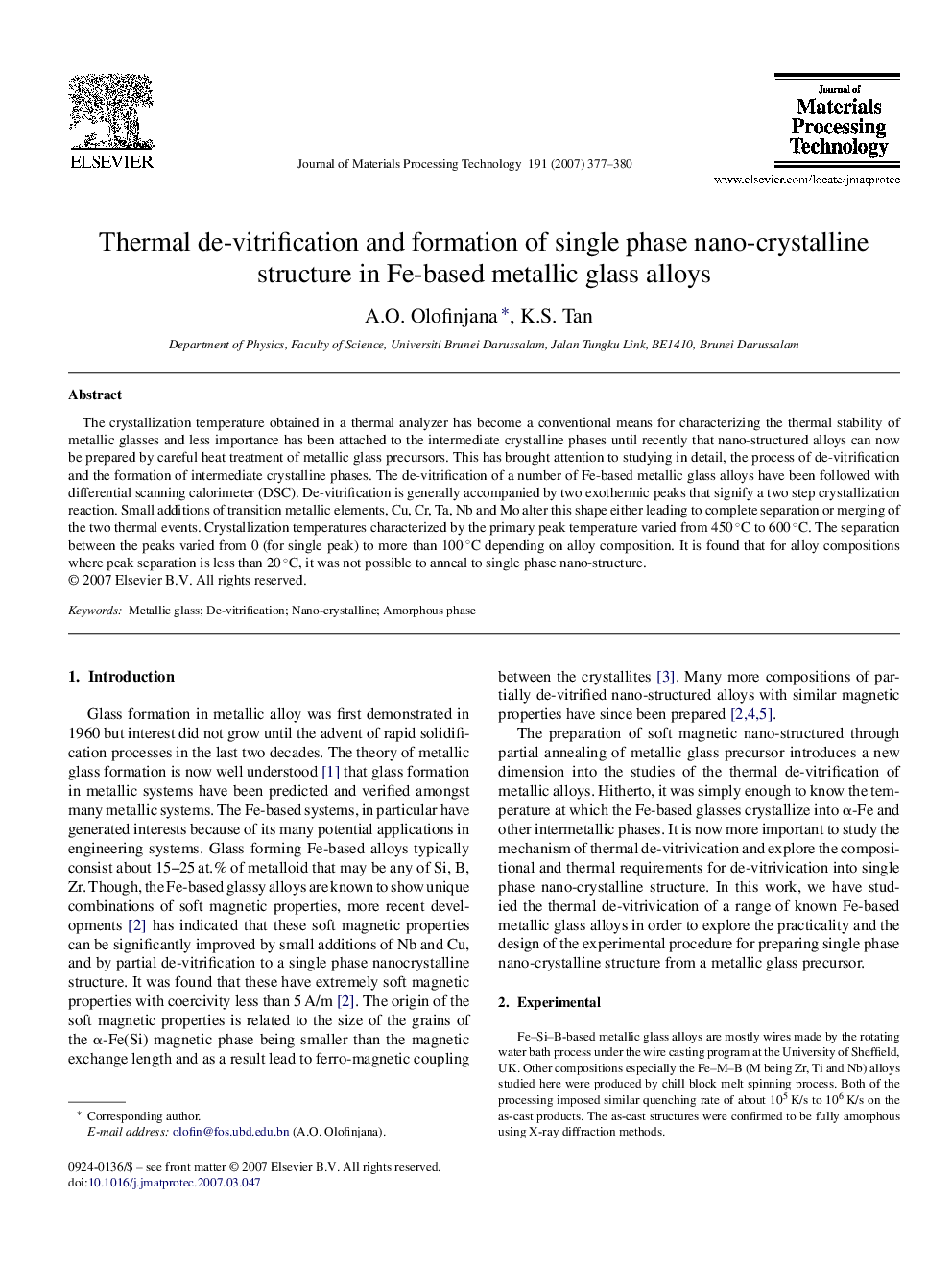| Article ID | Journal | Published Year | Pages | File Type |
|---|---|---|---|---|
| 793983 | Journal of Materials Processing Technology | 2007 | 4 Pages |
The crystallization temperature obtained in a thermal analyzer has become a conventional means for characterizing the thermal stability of metallic glasses and less importance has been attached to the intermediate crystalline phases until recently that nano-structured alloys can now be prepared by careful heat treatment of metallic glass precursors. This has brought attention to studying in detail, the process of de-vitrification and the formation of intermediate crystalline phases. The de-vitrification of a number of Fe-based metallic glass alloys have been followed with differential scanning calorimeter (DSC). De-vitrification is generally accompanied by two exothermic peaks that signify a two step crystallization reaction. Small additions of transition metallic elements, Cu, Cr, Ta, Nb and Mo alter this shape either leading to complete separation or merging of the two thermal events. Crystallization temperatures characterized by the primary peak temperature varied from 450 °C to 600 °C. The separation between the peaks varied from 0 (for single peak) to more than 100 °C depending on alloy composition. It is found that for alloy compositions where peak separation is less than 20 °C, it was not possible to anneal to single phase nano-structure.
